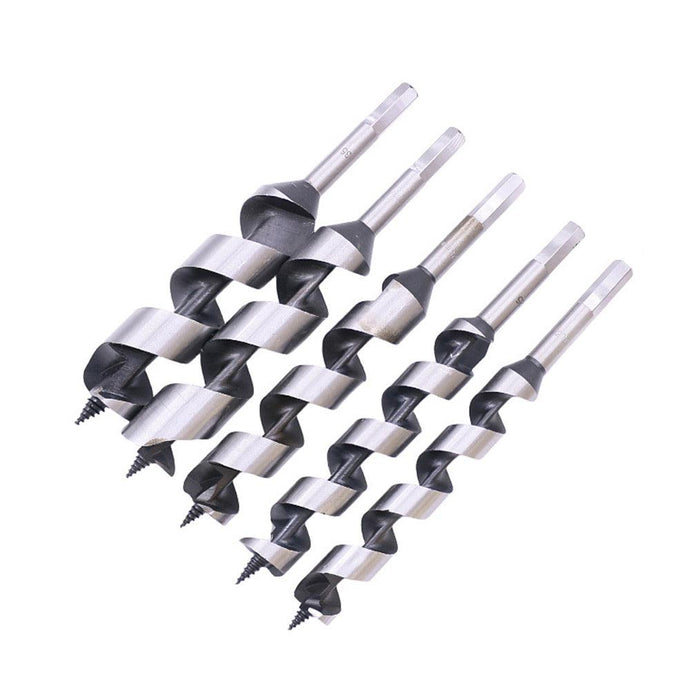Gundecha Industrial Complex, Kandivali East, Mumbai - 400101
Forstner vs. Spade Drill Bits: Why Precision and Clean Cuts Make All the Difference

Choosing the right drill bit can have a significant impact on the outcome of any woodworking project. Among the many options available, two of the most commonly used for boring larger holes in wood are the Forstner bit and the spade bit. While both serve the purpose of creating holes in wood, they do so with very different results. Deciding when to use one over the other comes down to the specific needs of your project. In particular, when precision, clean cuts, and versatility are the priorities, the Forstner bit stands out as the superior choice.
The first and most obvious reason to choose a Forstner bit over a spade bit is the quality of the hole it creates. Forstner bits are designed to make smooth, clean, and perfectly round holes with well-defined edges. Their circular cutting rim slices through wood with minimal tear-out, resulting in a finished hole that requires little to no sanding or additional cleanup. In contrast, spade bits are notorious for leaving rough, jagged edges, especially on the exit side of the hole. If you're working on a project where the appearance of the hole is important, such as furniture making, cabinetry, or decorative woodworking, the Forstner bit is the clear winner. Its ability to produce holes with clean edges and a flat bottom is invaluable for work that will be seen or used frequently.
One of the standout features of a Forstner bit is its ability to create flat-bottomed holes. This is particularly useful when you're drilling for dowels, hinges, or other hardware installations where the bottom of the hole needs to be level. Spade bits, while fast, leave a tapered hole that is not suitable for these types of applications. The flat-bottomed design of the Forstner bit also allows for more accurate depth control, making it a much better option when precision matters. Whether you're working on inlays, creating mortises, or setting up dowel joints, the ability to drill a flat-bottomed hole at a precise depth is a game-changer.
Another reason to opt for a Forstner bit over a spade bit is its versatility. Unlike spade bits, which are primarily used for quickly drilling through wood, Forstner bits can handle a wider range of materials. While their primary use is still in woodworking, Forstner bits can be used to drill clean holes in materials like plywood, plastic, and even some softer metals. This makes them a more flexible tool for workshops that handle a variety of materials. On the other hand, spade bits are best reserved for rough woodworking tasks and are not recommended for use on anything harder than softwood.
The ability of a Forstner bit to drill overlapping holes is another major advantage. When creating larger openings, particularly in fine woodworking projects, it is often necessary to drill holes that overlap or intersect. The design of the Forstner bit allows it to maintain control and precision, even when cutting into the edge of an existing hole. Spade bits, by contrast, struggle with this task. Their aggressive cutting action and lack of side stability make them prone to slipping and creating irregular cuts when trying to drill overlapping holes. This makes the Forstner bit indispensable when working on more complex or intricate designs where multiple holes must connect or intersect cleanly.
For angled drilling, the Forstner bit is also the better option. Whether you're working on angled joints or drilling into curved surfaces, Forstner bits provide superior control and stability. Their design allows for easier entry into the wood, even at non-perpendicular angles. Spade bits, by contrast, are not ideal for drilling at angles because they lack the same level of stability and precision. The flat blade of the spade bit often catches on the surface, causing the bit to wander and resulting in a poorly placed or irregular hole. If you're working on angled joinery or drilling at a difficult angle, the Forstner bit will provide far greater control and a cleaner result.
While spade bits are typically faster and more cost-effective, they sacrifice quality for speed. If your primary goal is to make a lot of holes quickly without worrying too much about the appearance of those holes, the spade bit might be the better option. This makes spade bits ideal for rough construction tasks, like running electrical wiring through studs or creating drainage holes in outdoor projects where aesthetics are less important. But in situations where the finish, accuracy, and clean edges matter - such as in furniture making, cabinetry, or detailed woodworking - a Forstner bit is the tool of choice.
Cost is another factor that may influence your decision, as Forstner bits tend to be more expensive than spade bits. However, the extra investment is well worth it for projects that demand high-quality results. The superior finish, precision, and versatility of the Forstner bit more than justify its higher price tag, especially if you're working on fine woodworking projects where the quality of each hole can significantly impact the overall look and functionality of the piece. Additionally, while Forstner bits may cost more upfront, they also tend to last longer due to their robust design and the fact that they can be easily sharpened to maintain their cutting efficiency.
In essence, the choice between a Forstner bit and a spade bit boils down to the demands of the project. If you need to make clean, precise, and aesthetically pleasing holes, the Forstner bit is unmatched. It offers superior control, versatility, and the ability to create flat-bottomed, overlapping, or angled holes with ease. On the other hand, spade bits are better suited for rough, fast drilling tasks where finish and precision are less critical. For anyone working on high-quality woodworking or professional-grade projects, investing in a good set of Forstner bits is a decision you won't regret.
